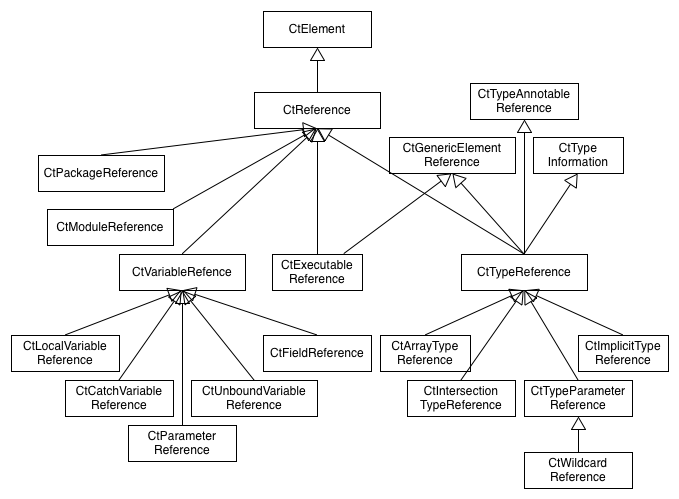The reference part of the meta model expresses the fact that program references
elements that are not necessarily reified into the meta model
(they may belong to third party libraries). For instance, an expression node
returning a String is bound to a type reference to String and not to the
compile-time model of String.java since the source code of String is (usually)
not part of the application code under analysis.
In other terms, references are used by meta model elements to reference elements
in a weak way. Weak references make it more flexible to construct and modify a
program model without having to get strong references on all referred elements.
Note:
From Spoon 5.0.0, CtReference is a subclass of CtElement.

How are references resolved?
References are resolved when the model is built, the resolved references are those
that point to classes for which the source code is available in the Spoon input path.
Do targets of references have to exist before you can reference them?
Since the references are weak, the targets of references do not have to exist before one references them.
The price to pay for this low coupling is that to navigate from one code element to another,
one has to chain a navigation to the reference and then to the target. For instance,
to navigate from a field to the type of the field, one writes field.getType().getDeclaration() (javadoc).